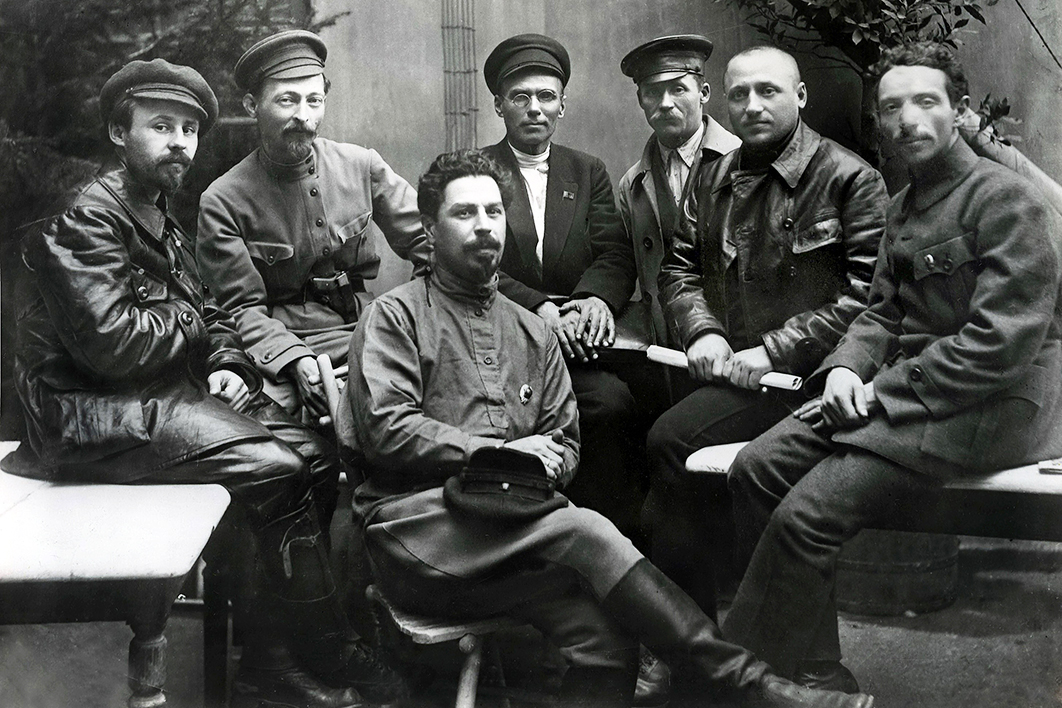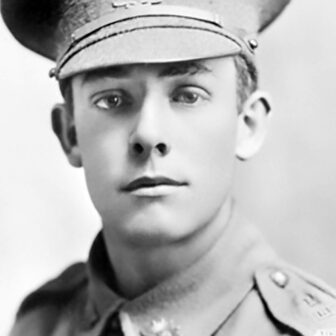One cold February day the British intelligence service received a secret update from an agent in Central Europe. The Russians were refusing to treat Ukraine as a separate country, the agent reported, and were willing to back that up with force. A reliable Ukrainian informant living in exile in Poland had asked how much international support Ukraine could expect if it asserted its right to independence.
Remarkably, that report was written not in February 2022, on the eve of the full-scale Russian invasion predicted by Western intelligence, but a century earlier, on 7 February 1922. The coincidence underlines both the scope and one of the themes — continuity across time — of Calder Walton’s ambitious and thought-provoking new book, Spies: The Epic Intelligence War between East and West.
Stretching from 1917 to the present day, Spies covers the intelligence contest between Russia, Great Britain and the United States that extends over more than a century. Perhaps surprisingly, Walton argues that Russia has invariably been one step ahead of the West. Especially before 1945 and after the collapse of the Soviet Union, the Russian intelligence services were an underestimated threat. Dating back to the conspiratorial traditions of the Cheka, the secret police created by Lenin, they were simply better spies and used deception more effectively.
The greatest, perhaps even “epic,” achievements of Soviet foreign intelligence occurred in the 1930s and during the second world war. Soviet agents penetrated the highest levels of government and the security services in Britain and the United States.
Walton, a distinguished British historian currently at Harvard, covers well-trodden ground but his analysis is sharp. Soviet agents like Alger Hiss, Harry Dexter White, Laurence Duggan and Ted Hall (in the United States), and the Cambridge Five, Alan Nunn May, Klaus Fuchs and George Blake (in Britain) are all familiar to scholars in the field, but Walton’s discussion is enriched by his engaging prose, his access to fresh archival records (some only declassified in 2022), and his sketching in of the military, political and cultural tapestry into which espionage was woven.
Although the intelligence provided by MI5 defector Kim Philby cost the lives of dozens of Allied agents, among other things, its immense potential value to the Soviets (and incalculable damage to the Allies) was undercut by Stalin’s paranoia or hubris. For the Soviet leader it was a case of “too good to be true.”
Stalin’s suspicion of disinformation was also evident when his spies warned of Germany’s imminent invasion of the Soviet Union in June 1941. He dismissed the warning from the celebrated spy Richard Sorge, whom he called a “lying shit,” and his pencilled response on the report of a German agent inside the Nazi regime (which I still recall seeing in the British National Archives) was “Fuck him.”
Stalin’s failure to believe the warnings about Hitler’s attack didn’t apply to material Moscow was receiving from spies who had penetrated the Manhattan Project in the United States. Stalin knew well before Harry Truman did that America was developing the atom bomb and, as is well known, expressed no surprise when the American president informed him of a new super weapon at the 1945 Potsdam conference. He also knew of the Venona operation, to which I’ll return, six years before Truman or the CIA.
For the United States, the cold war began in 1947. Three pivotal documents — the Truman Doctrine, the National Security Act (which created the CIA) and the text of Cominform’s “two camp” thesis — all appeared in that year. For Walton, however, it began with the Bolshevik revolution. In the 1920s, the Cheka had a division of officers coordinating foreign operations (and more than 100,000 agents inside Russia); at the time, MI5’s counterespionage unit had just five officers. In 1929 the US secretary of state shut down the government’s code-breaking agency because “gentlemen do not read each other’s mail.” In 1936, a decision to open an MI6 station in the British embassy in Moscow was thwarted because it was “liable to cause embarrassment.”
By the beginning of the second world war, Walton wryly notes, Soviet intelligence “had more graduates of British universities than Britain’s own intelligence services.” Despite the wartime alliance against Germany after 1941, the Soviets intensified their espionage; Western intelligence operations, especially from Bletchley Park, were meanwhile preoccupied with the Nazi threat and dutifully ignored the Soviet Union.
The one exception was the Venona project. This ultra-secret operation was launched in 1943 to decode cables sent from Moscow to its embassies and went on to expose networks of Soviet spies operating in the West. (These included Walter Clayton’s KLOD network in Australia, which Walton doesn’t mention.) Although MI5 and MI6 had fewer than 200 officers between them in 1947 while the KGB was soon employing about 200,000, the process of redressing the imbalance had begun.
But the Russians were unrelenting. Despite the Venona crackdown, they set about interfering in Western elections. In one of the more startling revelations in Spies, obtained from Russian archival records, Walton contends that Stalin colluded with the Progressive Party candidate in the 1948 US presidential elections, Henry Wallace, formerly Roosevelt’s Soviet-friendly wartime vice-president. Wallace appears to have secretly liaised with Stalin, who aligned himself closely with Wallace and vetted some of his campaign material. This, according to Walton, turned Wallace “into an asset for Stalin, if not a recruited Soviet agent.”
That may be an overstatement, but it at least confirms that the far more extensive election interference conducted by Russia in favour of Trump in 2016 (and before then in support of Gerald Ford in 1975) was not unprecedented. It was part of the arsenal of “active measures” against Britain and the United States that included bribery, forgery, misinformation, assassinations and the planting of deep-cover “illegals.”
Walton also probes the Soviet Union’s main adversary, the United States. American covert operations, termed “back-alley actions” by secretary of state Dean Rusk, became the weapon of choice in postwar Washington. They stretched from the CIA’s intervention in the 1948 Italian elections to the CIA-backed coups against democratically elected governments in Iran (1953), Guatemala (1954), the Dominican Republic (1961), British Guiana (1962), Iraq (1963), Bolivia (1971), Chile (1975) and many more, to the proxy war in support of the anti-Soviet mujahedeen in Afghanistan (from 1980). One fact of which I was unaware is that a secret annex of the Marshall Plan channelled reconstruction funds to the CIA for clandestine political-warfare activities in postwar Europe.
Walton’s most chilling, and disturbing, account of covert action concerns the American destabilisation of Congo and its complicity in the assassination of Patrice Lumumba, the country’s popular, left-leaning president, in 1960. Walton cites Eisenhower telling his national security adviser, Gordon Gray, that he was “very eager indeed that Lumumba be got rid of.” Lumumba was got rid of and the brutal, corrupt and despotic — but US-friendly — Joseph Mobutu ruled Congo (later Zaire) for the next thirty years. (In a wonderful vignette, Walton describes MI6’s head of station in Congo, Daphne Park, who helped coordinate Lumumba’s murder but who “looked, and acted, like Miss Marple from Agatha Christie’s novels.”) By taking in Africa, the Middle East, Latin and South America, Walton emphasises the global dimension of this long intelligence war.
The roles of high-ranking Soviet defectors to the West and moles working within the Russian intelligence services were crucial in the great cold war struggle, and their stories are compellingly told. Once again, most are familiar and well documented: Walter Krivitsky, a foreign intelligence officer who was eventually assassinated by Soviet intelligence (1941); Igor Gouzenko, who first exposed Moscow’s atomic espionage (1945); Oleg Penkovsky, perhaps the most prized agent, who played a pivotal role in the Cuban missile crisis (1962); Oleg Gordievsky, whose intelligence helped avert a nuclear first strike codenamed Able Archer (1983); Vasili Mitrokhin, who defected with a tranche of Moscow’s innermost intelligence secrets (1992); and Alexander Poteyev, who escaped an assassination attempt on US soil (2020).
A surprising omission is Vladimir and Evdokia Petrov, who defected from the Soviet embassy in Canberra in 1954 and provided immensely valuable intelligence over the next five years. It was Vladimir who revealed the whereabouts of the “missing diplomats,” Burgess and Maclean, a revelation absent from Walton’s extensive discussion of the Cambridge Five. ASIO is also absent from the text (and index), though listed in the glossary, and Australia, despite its membership of the unprecedented Five Eyes intelligence-sharing network, is similarly overlooked.
What are treated in some detail are the continuities. Boris Yeltsin dismembered the KGB, but the security services reconstituted under former KGB officer Vladimir Putin have retained and expanded their power. As Walton writes, the FSB and SVR (the domestic and foreign agencies) “inherited the KGB’s infrastructure, archives, agents, skill set, ideology and operational approach.” Only the acronyms changed.
Similarly, the cold war didn’t end with the collapse of the Soviet Union in 1991. Diverting its attention to counterterrorism after 9/11, the West failed to appreciate that the Russian security apparatus was becoming even more aggressive or that a revanchist Putin would use asymmetric espionage — hijacking the internet to disseminate disinformation, for example — to Russia’s advantage.
Once again, the West had to play catch-up. By 2019, 77 per cent of Kremlin staff had a background in the security services. Intelligence in Russia was intensely politicised, as it always has been, which helps explain why the planned swift invasion of Ukraine in February 2022, based on prewar intelligence analysis and briefings that could not contradict Putin, was a failure.
Christopher Andrew — that doyen of intelligence historians with whom Walton collaborated on his history of MI5 — calls Spies “a masterpiece,” but it does contain errors. Russian tanks never “rolled in” to Prague to enable the Czechoslovak coup d’état in 1948, and nor was it a “military takeover” (unlike 1968); it was engineered by the NKVD — the People’s Commissariat for Internal Affairs — and the local Communist Party. Ethel and Julius Rosenberg never “confessed to spying,” and nor was Julius “a Soviet agent in Los Alamos”; he coordinated a New York–based spy ring and engaged in industrial rather than atomic espionage. Stalin’s death in March 1953 did not “bring the Korean War to an end”; the reasons for the armistice signed three months later lay elsewhere. During Gordievsky’s exfiltration from Moscow, crisps, not soiled nappies, were thrown from the car window at the Finnish border to deter sniffer dogs; the nappies did exist, but were changed on top of the car boot directly over the hidden Gordievsky to successfully foil Soviet guards and Alsatians — an improvisation perhaps unique in espionage history.
Notwithstanding these quibbles and Walton’s questionable conclusion that “the age of the secret service is over,” Spies brims with insights and fascinating details, encompassing a full century in a global setting, and should attract an audience otherwise unacquainted (beyond film and TV) with the murky world of espionage. •
Spies: The Epic Intelligence War between East and West
By Calder Walton | Simon & Schuster | $34.99 | 625 pages




